#Fremont Cottonwood
Video
If I’m Going to Relax (Capitol Reef National Park) by Mark Stevens
Via Flickr:
If I’m Going to Relax It’s going to be under a tree Blue skies and some clouds floating by A cool breeze that reminds me of days growing up Not a worry on my mind But a smile across my face I’ll take my shoes off And let my toes dig in the dirt Then I’ll maybe take a nap, And have a place called Fruita on my mind. Another work of short poetry or prose to complement the image captured one afternoon while enjoying a few moments to relax in a picnic area around the Fruita part of the Capitol Reef National Park. The view is looking to the north-northeast and up, while lying down under a Fremont Cottonwood and setting of blue skies with clouds. Peaceful. Relaxing. Nap. A few thoughts that came to mind then. My thoughts in composing this was to have the tree in one portion of the image, since that was the main thing I was under, and then have the tree branches open up into the rest of the image. Given the brightness of the skies above and what I felt would be a large dynamic range, I had to choose a spot to meter the shutter speed so that I could later pull out the shadowed areas without any color cast being present. I went with the leaves and upper branches at that seemed like a mean exposure point. I later worked with control points in DxO PhotoLab 5 and then made some adjustments to bring out the contrast, saturation and brightness I wanted for the final image.
#Aquarius Plateau#Azimuth 23#Capitol Reef National Park#Central Utah Plateaus#Colorado Plateau#Cottonwood#Day 2#DxO PhotoLab 5 Edited#Free Verse Poetry#Fremont Cottonwood#Fruita#Fruita Area#Fruita Picnic Area#Intermountain West#Landscape#Landscape - Scenery#Looking NNE#Looking Up#Looking up at Sky#Looking up at Sky through Trees#Looking up at Sky thru Trees#Looking up to Sky#Nature#Nikon D850#No People#Outside#Partly Cloudy#Picnic Area#Poems Used#Poetry and Prose
0 notes
Photo

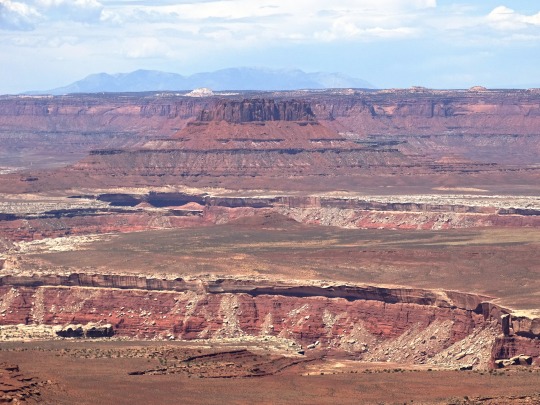
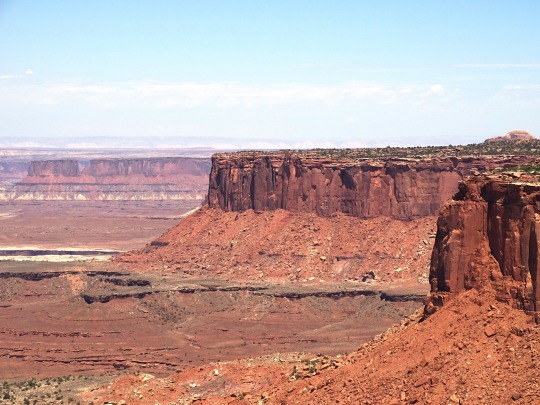
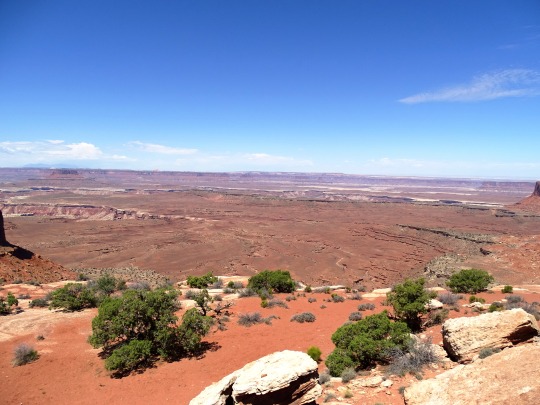


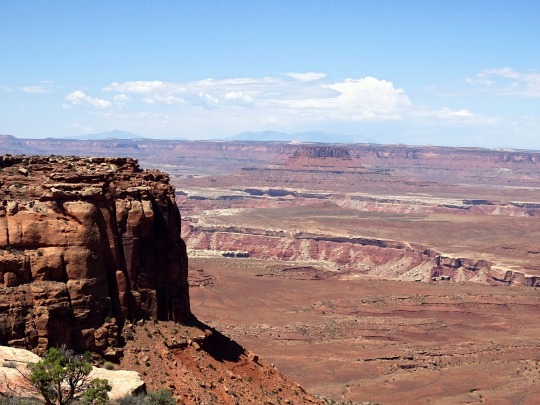



Buck Canyon Overlook, Canyonlands National Park (No. 4)
Canyonlands National Park contains a wide variety of plant life, including 11 cactus species, 20 moss species, liverworts, grasses and wildflowers. Varieties of trees include netleaf hackberry, Russian olive, Utah juniper, pinyon pine, tamarisk and Fremont's cottonwood. Shrubs include Mormon tea, blackbrush, four-wing saltbush and cliffrose.
Cryptobiotic soil is the foundation of life in Canyonlands, providing nitrogen fixation and moisture for plant seeds. One footprint can destroy decades of growth.
Source: Wikipedia
#Buck Canyon Overlook#Canyonlands National Park#desert#geology#bush#grass#flora#nature#landscape#countryside#tourist attraction#landmark#Colorado Plateau#Island in the Sky#original photography#summer 2022#USA#Utah#Western USA#red rock#rock formation#red sand#view#blue sky#clouds#butte#mesa#cliff
97 notes
·
View notes
Photo

Fremont Cottonwoods (Populus fremontii) along the Tanque Verde Wash, Pima County, Arizona.
136 notes
·
View notes
Text

Fremont's cottonwood tree (Populus fremontii)
Sabino Canyon, AZ
April 2, 2023
2 notes
·
View notes
Photo

Frosty cottonwoods at Seedskadee National Wildlife Refuge (via USFWS Mountain-Prairie)
On cold winter nights with no wind, hoar frost often forms on the vegetation at Seedskadee National Wildlife Refuge. As the fog rolls down the river valley, the sunlight begins to filter through, painting the landscape with light. Photo: Tom Koerner/USFWS
#Fremont Cottonwood#Populus fremontii#Populus#Salicaceae#Malpighiales#cottonwood#trees#hoarfrost#frost#landscape#Seedskadee NWR#Seedskadee National Wildlife Refuge#Wyoming
23 notes
·
View notes
Photo
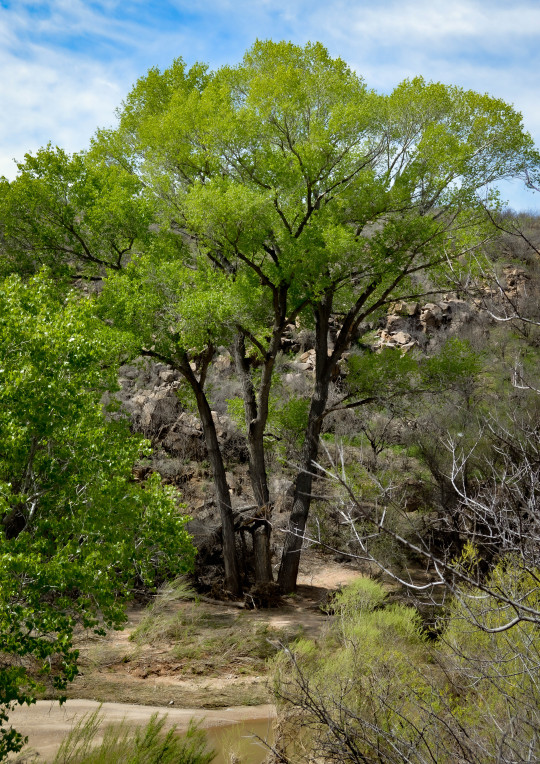
Untitled.
#photographers on tumblr#Fremont's cottonwood#Populus fremontii#San Pedro River#San Pedro Riparian National Conservation Area#Cochise County#Arizona
87 notes
·
View notes
Photo

Proof that the trees are trying to murder me.
14 notes
·
View notes
Note
What are your top ten trees?
I know so unfortunately little about trees! This past February, I finally bought two tree guides in the hopes that I'll get a little better, but for now my tree taste is extremely basic (and western-centric).
1. Tamarack (Larix laricina)

2. Quaking Aspen (Populus tremuloides)

3. Lodgepole Pine (Pinus contorta)

4. Pinyon Pine (Pinus edulis) (x)

5. White Spruce (Picea glauca)

6. Douglas Fir (Pseudotsuga menziesii)

7. Fremont’s Cottonwood (Populus fremontii)

8. Bald Cypress (Taxodium distichum)

9. Southern Live Oak (Quercus virginiana)

10. Great Basin Bristlecone Pine (Pinus longaeva)

172 notes
·
View notes
Text


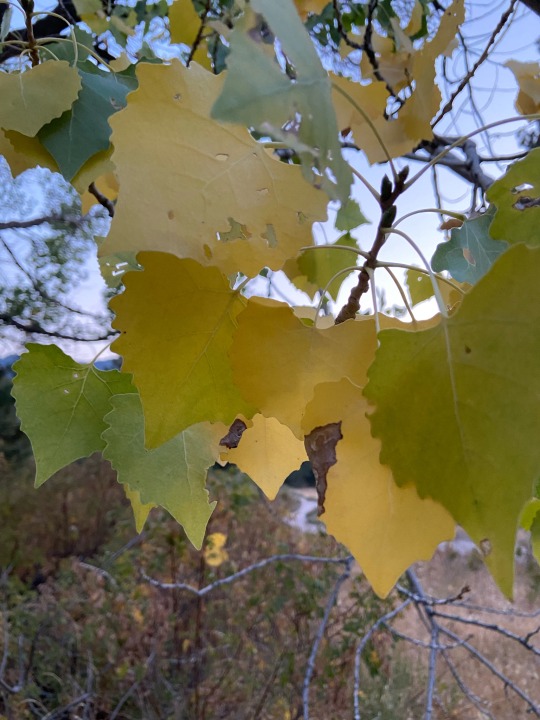
Fremont Cottonwood: (Poplar) Native to Nevada and the Sierra along rivers and waters sources. Beautiful examples can be found in Reno, Fort Churchill, Minden, Gardnerville and Topaz lake among other areas.
#sierra nevada#sierra nevada mountains#robert paul photography#nevada#northern sierra#hiking#eastern sierra#outdoors#california#high sierra
7 notes
·
View notes
Photo


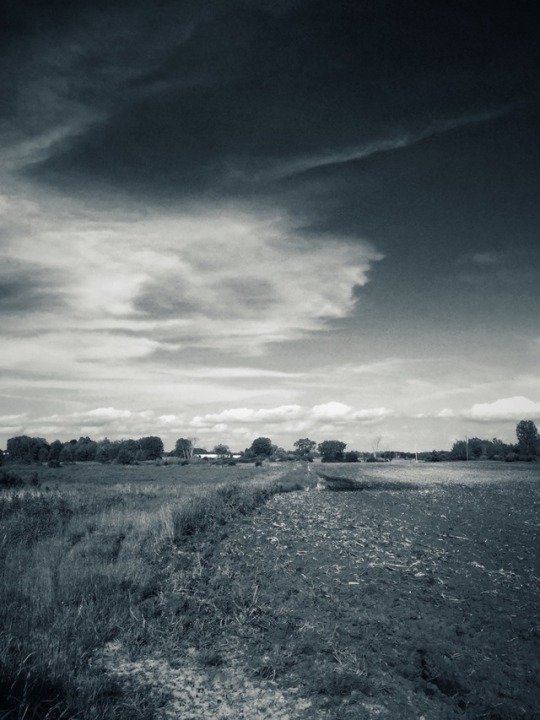
#daniellelanciaux#photography#michigan#fremont#country#trees#field#road#cottonwood trees#black and white#nature#small town#home#landscape#iphone#iphonography
13 notes
·
View notes
Video
If I’m Going to Relax (Capitol Reef National Park) by Mark Stevens
Via Flickr:
If I’m Going to Relax It’s going to be under a tree Blue skies and some clouds floating by A cool breeze that reminds me of days growing up Not a worry on my mind But a smile across my face I’ll take my shoes off And let my toes dig in the dirt Then I’ll maybe take a nap, And have a place called Fruita on my mind. Another work of short poetry or prose to complement the image captured one afternoon while enjoying a few moments to relax in a picnic area around the Fruita part of the Capitol Reef National Park. The view is looking to the north-northeast and up, while lying down under a Fremont Cottonwood and setting of blue skies with clouds. Peaceful. Relaxing. Nap. A few thoughts that came to mind then. My thoughts in composing this was to have the tree in one portion of the image, since that was the main thing I was under, and then have the tree branches open up into the rest of the image. Given the brightness of the skies above and what I felt would be a large dynamic range, I had to choose a spot to meter the shutter speed so that I could later pull out the shadowed areas without any color cast being present. I went with the leaves and upper branches at that seemed like a mean exposure point. I later worked with control points in DxO PhotoLab 5 and then made some adjustments to bring out the contrast, saturation and brightness I wanted for the final image.
#Aquarius Plateau#Azimuth 23#Capitol Reef National Park#Central Utah Plateaus#Colorado Plateau#Cottonwood#Day 2#DxO PhotoLab 5 Edited#Free Verse Poetry#Fremont Cottonwood#Fruita#Fruita Area#Fruita Picnic Area#Intermountain West#Landscape#Landscape - Scenery#Looking NNE#Looking Up#Looking up at Sky#Looking up at Sky through Trees#Looking up at Sky thru Trees#Looking up to Sky#Nature#Nikon D850#No People#Outside#Partly Cloudy#Picnic Area#Poems Used#Poetry and Prose
0 notes
Photo
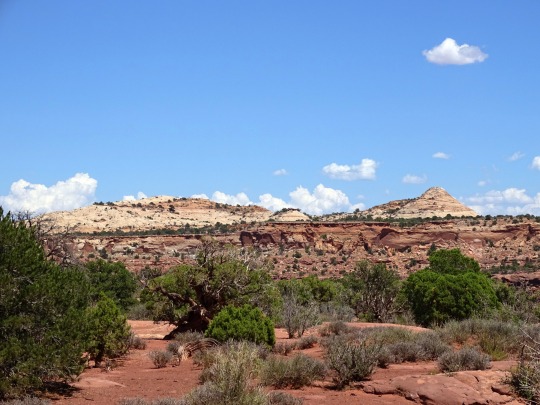
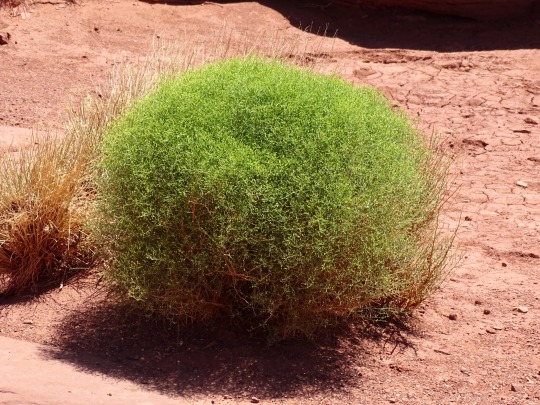
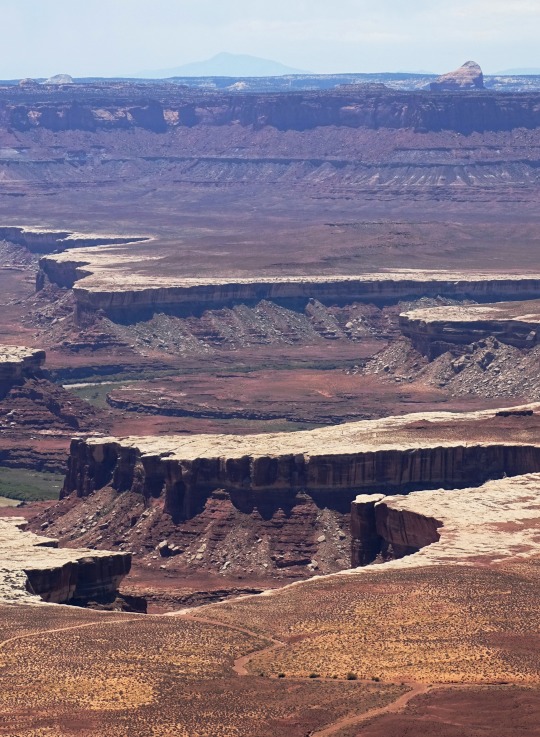
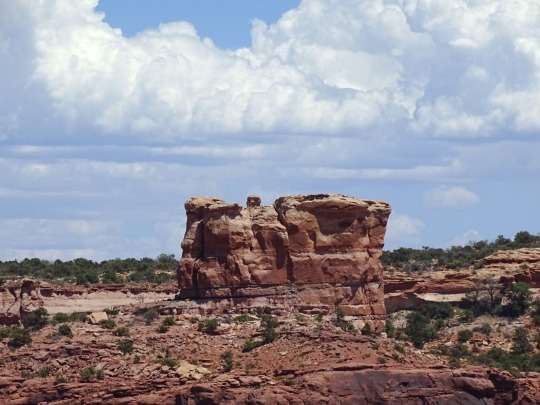
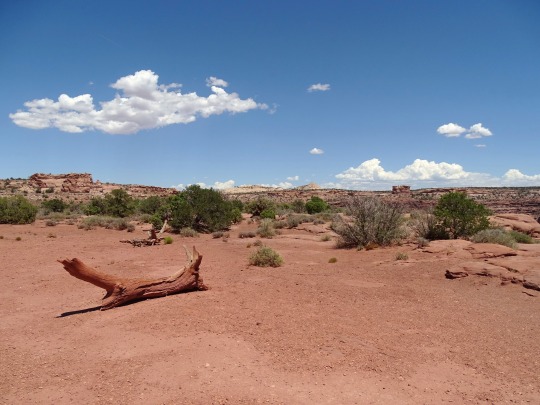
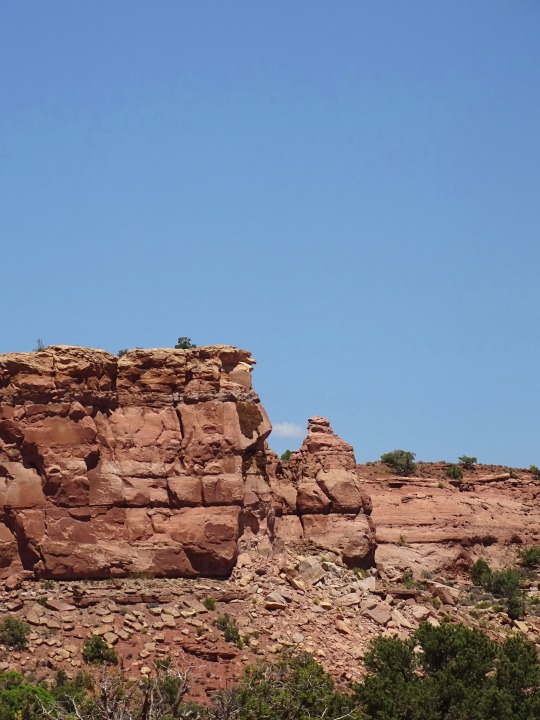
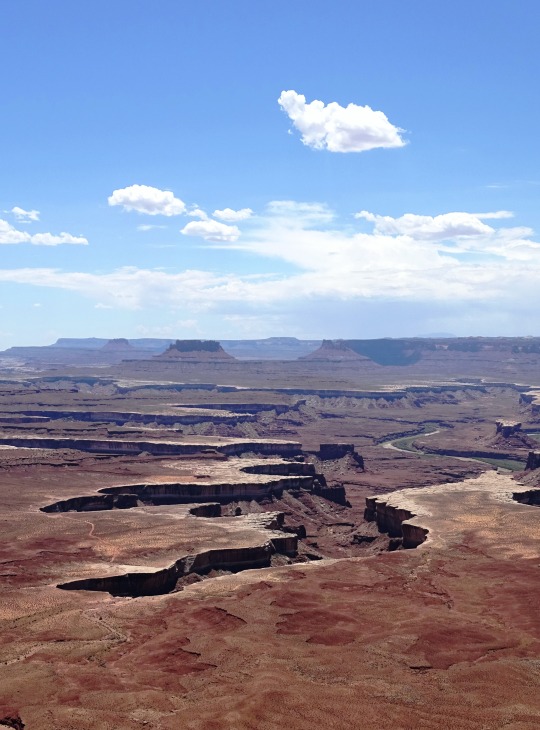



Green River Overlook, Canyonlands National Park (No. 4)
Drought Evaders
Drought evaders are a distinct group of plants that rely on location more than adaptation. These plants are only able to survive in wetter micro-climates, like riparian areas. Drought evaders include Fremont’s cottonwood (Populus fremontii), coyote willow (Salix exigua), and singleleaf ash (Fraxinus anomala).
How do we survive?
Humans also adapt to live in the desert. The ancestral Puebloans built villages around springs. Today, hikers carry water with them. Although we may not have spines like claret cup or burrow in mud like snails, we too are affected by the high desert’s constantly changing water supply. When visiting, your survival strategy should be to always carry water with you and two drink around one gallon (four liters) of water a day.
Source
#Tumble Pigweed#Green River Overlook#Canyonlands National Park#flora#Island in the Sky#Colorado Plateau#White Rim Sandstone#geology#USA#desert#landscape#countryside#nature#grass#bush#vacation#travel#summer 2022#original photography#tourist attraction#landmark#view#blue sky#clouds#dead wood#red sand#red rock#rock formation#Utah#Western USA
6 notes
·
View notes
Photo

An old and massive Fremont Cottonwood (Populus fremontii) at Cottonwood Tank, Las Cienegas National Conservation Area, Arizona.
58 notes
·
View notes
Note
You literally asked for this directly
🌻🌻🌻🌻🌻🌻🌻🌻🌻🌻🌻🌻🌻🌻🌻🌻🌻🌻🌻🌻🌻🌻🌻🌻🌻🌻🌻🌻🌻🌻🌻🌻🌻🌻🌻🌻🌻🌻🌻🌻🌻🌻🌻🌻🌻🌻🌻🌻🌻🌻🌻🌻🌻🌻🌻🌻🌻🌻🌻🌻🌻🌻🌻🌻🌻🌻🌻🌻🌻
Should be 69 of those 😚
I hate you so much. You monster. I only expressed that I was surprised and you did this to me. I didn't ask for this.
Nonetheless....
🌻 - there is a bug in the kitchen and I am now too scared to go in there.
🌻 - Harper is trying to protect me but she is frankly useless.
🌻 - it's not like a big bug but it is definitely not small.
🌻 - I saw moth put a flower before each of these and thought it was neat. So I am now doing it.
🌻 - the person who sent me this sends a "Daily dose of disappointment" in a group chat we are in. Except it is not daily. It's whenever she has one.
🌻 - Kool Aid originated in Nebraska.
🌻 - The Omaha zoo has both the largest indoor desert as well as the largest indoor rainforest. The rainforest is my favorite.
🌻 - there is a rope bridge in there though that used to scare me a lot.
🌻 - nebraska also apparently originated the reuben sandwich which is gross.
🌻 - the Ogalala aquifer is the largest underground water supply in the US.
🌻 - the 911 system originated in Lincoln so that's kinda cool.
🌻 - the largest Woolly Mammath fossil is from Nebraska. If I remember correctly it's the one in Morrill Hall. His name is Archie and I will die for him.
🌻 - speaking of Archie, he was found on a farm by chickens. The farmer got confused at why the chickens were pecking at something, went to look, found big bones and called an archeologist.
🌻 - okay the bug is still a problem but I now have you to save me when it shows it's little fucking face again.
🌻 - the word Nebraska comes from the Oto word meaning flat water.
🌻 - hell yeah we going back to nebraska facts. Next is that the goldrod is the state flower. Flower is kinda pretty but the paper color by the same name is stupid.
🌻 - blue agate is the state gem and I vibe with that. Agate is cool as fuck.
🌻 - UNL's weight room is supposedly the largest in the country at 3/4ths of an acre (32.6k sqft)
🌻 - the Nebraska capitol had a 9.8 million budget, came in under budget, was paid for by the time it finished construction.
🌻 - I think the capitol looks weird but I am also desensitized to it but objectively it is really cool.
🌻 - cliff notes was founded in Nebraska.
🌻 - unfortunately when the UNL stadium is seated to capacity it technically becomes the 3rd most populated place in the state..... It's also really loud.... And I hate it.
🌻 - Arbor day comes from Nebraska. Which is cool because trees.
🌻 - the Scotts Bluff National Museum has a section of the oregon trail wagon roadbed that you can hike. The museum itself is also kinda cool so I suggest it if you ever are in the area.
🌻 - I wish to kill you, kathryn.
🌻 - more Nebraska facts I hear you cry! No problem! Nebraska has Car Henge! So if you ever want to get the vibe of Stonehenge except stupid and made of antique cars in a field in the middle of fucking nowhere you're in luck.
🌻 - Runzas are the official state food and I hate it. Runza makes decent chicken strips but Runzas are gross. Yes handover that cabbage meat bread 🤢
🌻 - Nebraska has a navy apparently. I know this but I cant tell you what the fuck they do since we are like the most landlocked state in the country.
🌻 - That one president, Gerald Ford, born in Nebraska. That's kinda neat. (I know nothing else about this man or his presidency except he is the only one not nationally elected.)
🌻 - Fred Astaire, Marlon Brando, and Johnny Carson (I think, or he just went to UNL, the media arts building is named after him) are all from Nebraska.
🌻 - getting sick of nebraska facts? Suffer. Nebraska has more miles of river than any other state, which is weird because we were called the great American desert.
🌻 - apparently the Nebraska state insect is the honeybee!!! 🐝
🌻 - the Niobrara river is apparently really good for canoeing and has like 90 waterfalls.
🌻 - I am running low on nebraska facts.
🌻 - there is a park/reserve just outside Lincoln that has some bison in it. Do not fuck with bison. They will wreck your shit.
🌻 - I don't know if he is still alive but there used to be a bald eagle in the same park that only had one wing. (Actually I think he was missing half of one but still)
🌻 - the cottonwood tree is awful and on a bad year can look like a light snow if too many trees are nearby.
🌻 - the ashfall fossil beds are where you can go to see an active archeology site with the fossils of tons of animals killed by a volcano 12 million years ago.
🌻 - Nebraska has a unicameral. Which is basically instead of a state house and state senate we have one legislative body that is elected on a non-partisan ticket.
🌻 - it is illegal to fish whales in Nebraska. Once again we are completely land locked and there are no whales but.. its still illegal.
🌻 - I am dying here. Kathryn I will punch you.
🌻 - Morrill Hall also has elephant hall which is the main hall right when you pass the entry desk. It has like 15 (?) fossils in it and apparently it's the largest collection of elephant fossils on display.
🌻 - speaking of Morrill Hall, it only displays about 1% of it's collection. The rest is stored at Nebraska Hall nearby.
🌻 - I think the cranes in North Platte are lame.
🌻 - nebraska furniture mart in Omaha is apparently the largest in the country. Which I can believe. I went to the discount part and it was a giant warehouse. I don't know what the actual sale floor is like.
🌻 - cherry county is bigger than Connecticut.
🌻 - O street (highway 6) is the longest straight main street
🌻 - Nebraska has a testicle festival. It's probably exactly what you think it is. Too many fried cow balls is what it is.
🌻 - there is a really cool church between Lincoln and omaha called the Holy Family Shrine. Its got massive arches and is mostly glass. Im not catholic so it's not really a religious thing but a bitch can appreciate some cool architecture.
🌻 - the Hall brothers who made Hallmark (card company) are from Nebraska.
🌻 - UNL's Love library has a Shakespeare Folio. Its in the Special Collections and Archives' vault. I want to see it so bad and one of the archivists told me she would show me it next time they opened the vault but then corona... :(
🌻 - UNL's library also has like 5 million+ physical items in it's collections.
🌻 - the serial killer Charles Starkweather is buried in Wyuka in Lincoln.
🌻 - Kearney, NE is dead center geographically between Boston and San Francisco.
🌻 - 92% of the state is farmland/ranches.
🌻 - if you have made it this far I am sorry.
🌻 - Nearly every fun facts about nebraska page has mentioned that the food stuffs Spam is manufactured in Fremont. So I'll mention out of peer pressure.
🌻 - the bug is still in the kitchen. Kathryn has foresaken me. I may perish in the night.
🌻 - 10 more. There is a roller skating museum in Lincoln. It's at 48th and South streets. Has largest collection of historical roller skates.
🌻 - Larry the Cable Guy I'd from Nebraska and he has recorded narrations for some exhibits in the Lincoln children's zoo. Or he used to it's been awhile.
🌻 - going back to UNL stuffs. Morrill Hall is a pretty cool museum and you should definitely go there. If only to say hi to Archie.
🌻 - the bronze Archie that is outside the museum is currently sporting a fashionable face mask set both over his trunk and his actual mouth.
🌻 - there are a couple dino fossils in that museum and if you step over the barrier and onto the decorative rocks an alarm will go off. And staff will be pissed because now they have to tell at you.
🌻 - said museum also has a lot of cool rocks on the third floor.
🌻 - and the bottom floor has like a hall of nebraska animals where you can hit buttons to listen to animal sounds.
🌻 - aaand a room with a plesiosaur embedded in the floor which is really cool.
🌻 - there is also a cool museum in Nebraska called the SAC. Which is the museum for Strategic Air Command. It has a lot of planes and some stuff from moon missions and air force stuff. When I was little some oil from the big plane in the entrance leaked onto a pillow I had when I was sleeping under it on a trip.
🌻 - nebraska is better than iowa but nebraska kinda sucks too so it's not like it matters truthfully.
🌻 - Nebraska has a lot of weather like giant hailstones and tornadoes but Lincoln doesn't get much because it is in a geographic dent so weather tends to weaken over the city. Which is lame. I want lots of snow.
And there we are folks. 69 fucking facts. 58 of which are about Nebraska purely out of spite. I counted.
I am now off to murder my roommate.
(jk but you should expect to be quizzed)
#nebraska facts#in case anyone wants to learn any thing#long post#please save me this took an hour and a half to type on my phone#also i did look up about half of these. a lot i knew or are my original knowledge.#kathryn you bitch#i brought this on myself for opening my mouth and mentioning it.#also the bug has still not been killed#11/69 of these are not about nebraska.
2 notes
·
View notes
Text

Acacia National Park! Maine’s Acadia National Park straddles eastern-deciduous and northern-boreal forests, attracting breeding songbirds, including nearly two-dozen warbler species, in summer. By 2050, as temperatures increase, boreal songbirds like Bay-breasted Warblers and Boreal Chickadees may be extirpated and move to cooler forests north of the park. At the same time, Acadia’s waters are poised to grow more crowded; waterbirds like the American Bittern and Pied-billed Grebe might skip their southbound migrations and winter in Maine instead. And Maine’s beloved Common Loon might stop breeding in the park. It is recommended that managers maintain wetlands and continue to track breeding warblers.
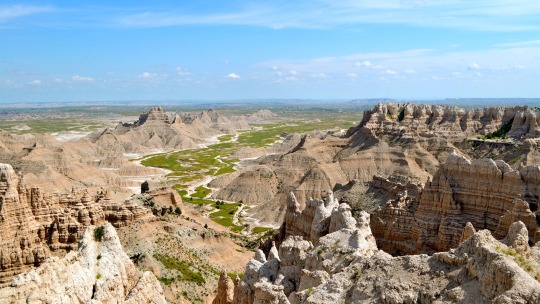
Badlands National Park! Best known for its rugged formations, South Dakota's Badlands National Park is also a birding destination for its grassland species. By 2050, hotter conditions may trigger declines in grassland birds that breed there in summer, such as Upland Sandpiper, Horned Lark, and Burrowing Owl, and the Mountain Bluebird may be extirpated from the park. Meanwhile, species more adapted to the arid Great Plains, including the Mississippi Kite, Northern Bobwhite, and Scissor-tailed Flycatcher, and the Southwest, like Scaled Quail, Cassin’s Kingbird, and Chihuahuan Raven, will likely thrive within its borders. Preserving healthy grasslands will give all birds the best chance possible.

Big Bend National Park! In western Texas along the Mexican border, Big Bend National Park is the largest protected area of Chihuahuan Desert in the U.S. The park consists of vibrant desert habitat, including mountain woodlands and rivers, and supports hundreds of bird species. After the annual spring bloom, birds become scarce during June and July’s hot, dry period; a second flowering and nesting cycle follows, in August and September, during the summer rainy season.
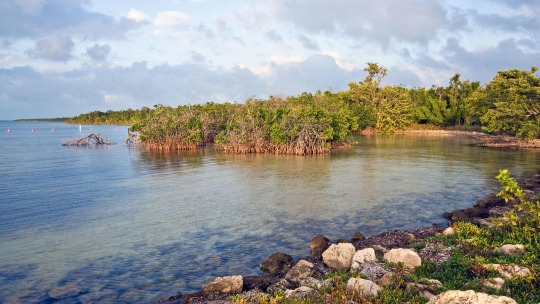
Biscayne National Park! Located in southern Florida, Biscayne National Park is 95 percent water and is home to numerous bird species, including loons, warblers, grebes, wading birds, and pelicans. Part of the Greater Everglades Ecosystem, the park suffers from inadequate freshwater flows, increased salinities, and an ever-growing Miami encroaching on its banks. Along with advancing Everglades restoration components specific to Biscayne Bay, managers can help bird species adapt to a changing climate by working with cooperating agencies and landowners to improve habitat connectivity and buffer zones across boundaries

Black Canyon of the Gunnison National Park! Black Canyon of the Gunnison National Park, located in western Colorado, is marked by wetlands, large rock formations, and deep canyons, such as the Black Canyon, which formed 1.5 billion years ago. Birds live in various habitats lining the canyon—from pygmy forests and oak flats at the rim, to shrubs and wildflowers along the canyon walls, to lush cottonwoods growing around the river at the bottom.

Bryce Canyon National Park! Located in southwestern Utah, Bryce Canyon National Park’s vast, arid landscape supports a diverse range of trees, shrubs, and plants, which support birds and other wildlife. By 2050, the park’s climate may become unsuitable for 19 species in summer, including songbirds like the Ruby-crowned Kinglet, Yellow Warbler, and Song Sparrow. In winter, it may be colonized by 43 species not found there today, including those from drier regions like the Crissal Thrasher and Cactus Wren. Due to its arid climate, water conservation and preservation of riparian habitats will be central for management of park resources.
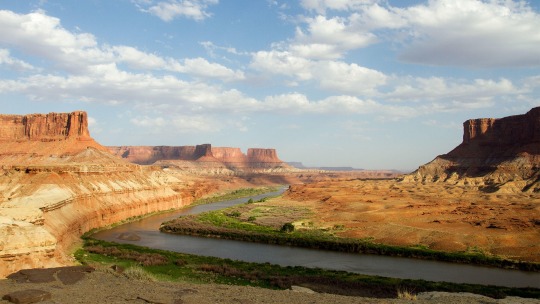
Canyonlands National Park! A recognized Important Bird Area, Canyonlands National Park encompasses the intersection of the Colorado River and the Green River in Utah. In summer, the park’s climate could grow suitable for 19 new bird species like Yellow-crowned Night Herons, Greater Roadrunners, and Painted Buntings by 2050. Unfortunately, park visitors seeking to catch a glimpse of the Gray-crowned Rosy Finch may miss their chance as the climate warms. It is recommended that managers support habitat along the rivers, as this is a refuge for many birds as they migrate across the surrounding desert.

Capitol Reef National Park! At Capitol Reef National Park in south-central Utah, willow thickets and cottonwood forests are juxtaposed against tall canyon walls and expanses of barren red rock. By 2050, this park’s winter climate might become suitable for 57 bird species like the Vermilion Flycatcher, Western Bluebird, and Violet-green Swallow, some of which could begin overwintering in the park. The same climatic changes might cause the extirpation of 20 species in summer, including the American Goldfinch and Tree Swallow. Within Capitol Reef, the Fremont River is an Important Bird Area and a lush oasis in an otherwise arid landscape. It is recommended that managers focus on this area for conservation efforts.
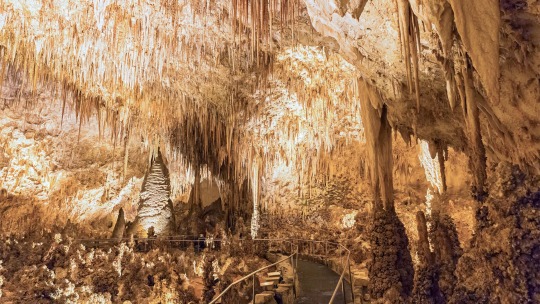
Carlsbad Caverns National Park! New Mexico's Carlsbad Caverns National Park is situated in the Northern Chihuahuan Desert, one of the three most biologically rich and diverse desert ecoregions in the world. Habitats within the park range from lower-elevation desert shrublands and semi-grasslands to higher elevation montane grasslands, shrublands, and woodlands. Riparian woodlands and wetlands are few, but provide critical breeding and stopover habitat for water-loving birds—including Rattlesnake Springs, a designated Important Bird Area. The park is home to 15 species that are highly sensitive to warming temperatures, like the Burrowing Owl. The park will serve as an important refuge for these climate-sensitive species.

Channel Island National Park! Channel Islands National Park includes five remarkable islands off the coast of southern California, where thousands of years of isolation have created unique habitats and bird populations. This Important Bird Area is home to the only breeding ground for Brown Pelican in California, and they're likely to continue finding suitable climate in the park through 2050. Overall, the park’s climate is projected to become suitable for 26 new species in summer and 27 species in winter, which could potentially colonize the islands. It is recommended that managers continue to optimize habitat for its birds, focusing on maintaining appropriate habitat and working with other agencies to ensure that marine food resources are plentiful.
5 notes
·
View notes
Photo

Majestic Fremont’s cottonwood (Populus fremontii) in Fruita
Capitol Reef National Park, Utah
21 notes
·
View notes